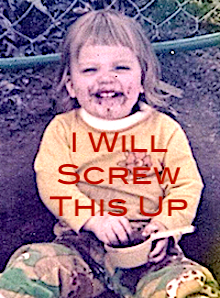Self-Care for Kids Has Diverse Cultural Roots
A MiddleWeb Blog
 It might not occur to us that self-care – a huge topic in school these days for both educators and students – is culturally driven…until you compare stories with folks about what happened in your family growing up when you got a cold.
It might not occur to us that self-care – a huge topic in school these days for both educators and students – is culturally driven…until you compare stories with folks about what happened in your family growing up when you got a cold.
For me, it was soup, saltines, a hot water bottle, and bed. But when I got sick in Brazil, my hosts fed me jengibre, a potent ginger tea. Today, my Chinese families might make a batch of congee, a thick comforting chicken and rice stew with scallions.
And that’s only the food – never mind the internalized values we draw upon. (How many times these past two years have we had to overtly combat our Protestant work ethics to stay home and get a Covid test?)
The ways and means by which people hunker down and take care of themselves in times of illness or stress are as varied as the cultures they come from.
I began to wonder about this after the Mexican mother of one of my students gave birth this past fall, at the same time that my district was driving home messages about self-care (see my first post on self-care). What was she doing to take care of herself? How could I educate myself on how my students and their families viewed self-care?
Decolonizing approaches to self-care
I did some digging and e-introduced myself to Ari Acosta, a Behavioral Health Equity Specialist at the Texas Institute for Excellence. Ari has a double master’s degree and is a native Venezuelan whose whole job (and what a neat job!) is to ask questions like this.
What follows are highlights from a presentation she made recently on self-care in the Hispanic/Latinx community– specifically, how to decolonize our approaches to self-care by recognizing the widely diverse cultural roots of healing and health.
► First (and forever), the Hispanic community is not a monolith. Even in my tiny school district, the cultural differences between my Mexican and Puerto Rican students are huge, and often a source of laughter (along the lines of my Mexican kids teasing their friends, saying “You Puerto Ricans can’t handle REAL spices”).
► Second, the Americanized, white, individualized, middle class “me-time in a bubble bath” view of self-care is only one among many. When we present this view of self-care to families or students coming from a different cultural heritage, we must be mindful of the risk of causing students to feel inferior or flawed if they aren’t doing it exactly the way Google and Pinterest say we should.
Spotlighting Latino/Hispanic culture
Ari also directed me to a related workshop by two wonderful Latina doctors on “Self-Care Cultural Considerations for Latino/Hispanic Frontline Workers.” I’d recommend downloading the slides and going through this rich resource at your own pace. For the sake of space I’ll note my top three takeaways here.
► Familismo is a Latino value that conceptualizes “inclusiveness, participation and strong relationships in nuclear and extended family networks.” Within familismo, self-care is not individualized, but rooted in the collective. Interdependence is critical. I see this every day when my older students talk about taking care of their smaller brothers, sisters, and cousins.
► Gender roles are important to consider in the Latino culture. Men and women can be expected to handle challenges in very different ways: with overt strength and power, or with self-sublimating sacrifice. While my first-generation students are navigating American understandings of gender, I can also see the influence of their culture in their reactions to life’s challenges. It’s part of my job to respect these roles, and to point out their benefits to both my boys and girls.
► Endurance. “In the Hispanic/Latino culture,” the doctors write, “life difficulties are to be endured, handled and/or worked through, regardless. Quitting is not an option.” I am consistently amazed at the amount of personal challenge my Latino students work through with a minimum of grumbling or complaint. My challenge here is not to assume that just because they are more resilient and mature than some of their American peers, they do not need support or assistance.
I’m only at the very beginning of my journey into understanding Latino culture more deeply, but I’m so grateful for the perspective Ari and her colleagues have provided for me. I hope it’s helpful to you as educators as well.

































